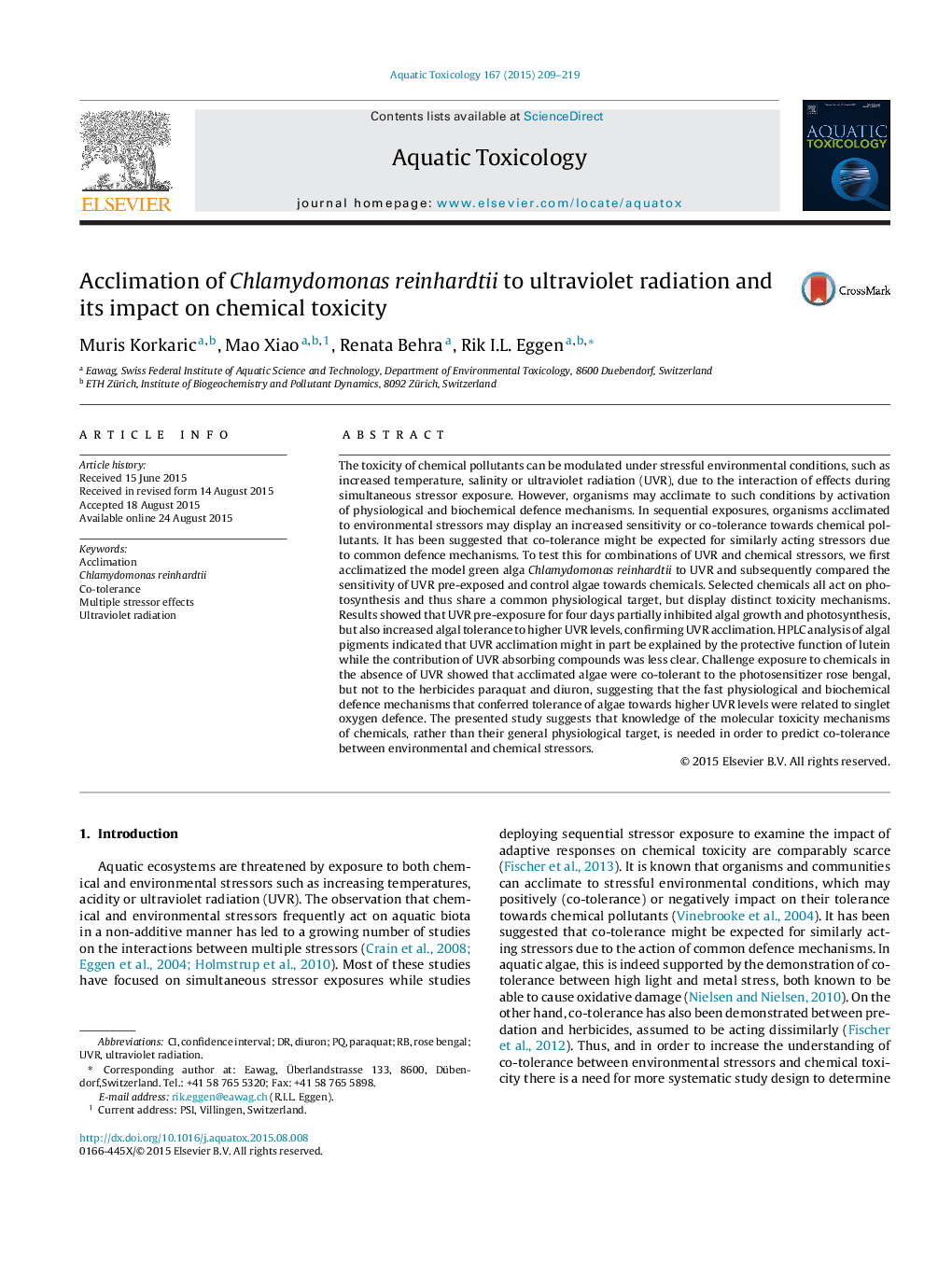| کد مقاله | کد نشریه | سال انتشار | مقاله انگلیسی | نسخه تمام متن |
|---|---|---|---|---|
| 6382166 | 1625938 | 2015 | 11 صفحه PDF | دانلود رایگان |
عنوان انگلیسی مقاله ISI
Acclimation of Chlamydomonas reinhardtii to ultraviolet radiation and its impact on chemical toxicity
دانلود مقاله + سفارش ترجمه
دانلود مقاله ISI انگلیسی
رایگان برای ایرانیان
کلمات کلیدی
موضوعات مرتبط
علوم زیستی و بیوفناوری
علوم کشاورزی و بیولوژیک
علوم آبزیان
پیش نمایش صفحه اول مقاله

چکیده انگلیسی
The toxicity of chemical pollutants can be modulated under stressful environmental conditions, such as increased temperature, salinity or ultraviolet radiation (UVR), due to the interaction of effects during simultaneous stressor exposure. However, organisms may acclimate to such conditions by activation of physiological and biochemical defence mechanisms. In sequential exposures, organisms acclimated to environmental stressors may display an increased sensitivity or co-tolerance towards chemical pollutants. It has been suggested that co-tolerance might be expected for similarly acting stressors due to common defence mechanisms. To test this for combinations of UVR and chemical stressors, we first acclimatized the model green alga Chlamydomonas reinhardtii to UVR and subsequently compared the sensitivity of UVR pre-exposed and control algae towards chemicals. Selected chemicals all act on photosynthesis and thus share a common physiological target, but display distinct toxicity mechanisms. Results showed that UVR pre-exposure for four days partially inhibited algal growth and photosynthesis, but also increased algal tolerance to higher UVR levels, confirming UVR acclimation. HPLC analysis of algal pigments indicated that UVR acclimation might in part be explained by the protective function of lutein while the contribution of UVR absorbing compounds was less clear. Challenge exposure to chemicals in the absence of UVR showed that acclimated algae were co-tolerant to the photosensitizer rose bengal, but not to the herbicides paraquat and diuron, suggesting that the fast physiological and biochemical defence mechanisms that conferred tolerance of algae towards higher UVR levels were related to singlet oxygen defence. The presented study suggests that knowledge of the molecular toxicity mechanisms of chemicals, rather than their general physiological target, is needed in order to predict co-tolerance between environmental and chemical stressors.
ناشر
Database: Elsevier - ScienceDirect (ساینس دایرکت)
Journal: Aquatic Toxicology - Volume 167, October 2015, Pages 209-219
Journal: Aquatic Toxicology - Volume 167, October 2015, Pages 209-219
نویسندگان
Muris Korkaric, Mao Xiao, Renata Behra, Rik I.L. Eggen,